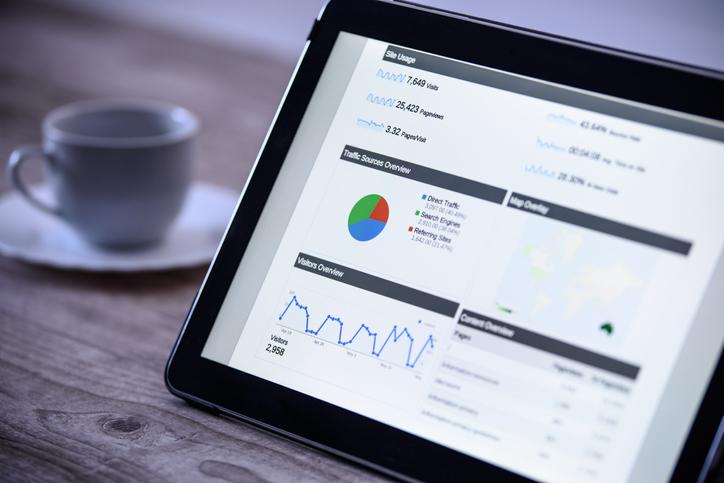If you plan to optimize your website for SEO the time is now to kick off that project.
Many companies wait to set up detailed tracking until they’re ready to launch their marketing strategy.
Unfortunately, this can leave you months behind when you finally launch.
If you’re planning to get the most out of your SEO strategy, you can’t afford to wait. If you do, you’re losing months of insight.
Your SEO launch can wait, setting up tracking cannot.
Most companies have the basics set up in Google Analytics. They have the tracking code on their website, but not much else.
While this is an ok place to start, it leaves mountains of helpful data untouched and ungathered.
We’re talking goal tracking, Search Console, conversion forms, phone call tracking…the opportunity to gain actionable insights on the performance of your website are vast.
This matters because the tools that run behind the scenes need time to gather baseline data before they start to deliver solid insights you can use.
You may not be ready right now to start a PPC campaign or to work on your SEO, but that doesn’t mean it’s safe to wait to set up tracking.
The sooner you start tracking data, the better
Unless of course, you want to wait months for key insights to start rolling in when you finally start an SEO campaign…
Most business owners we speak to aren’t willing to wait months to start to see results. There is too much opportunity cost in waiting while you gather crucial baseline data.
Why are you waiting months to really see results if your campaign is running?
Because when you start an SEO campaign without a baseline of data for your existing website you can only make educated guesses on the changes you should make to your website to improve your SEO.
Without the benchmark data to back it up, you’re guessing when you could be making savvy, informed decisions.
Set up tracking now to make informed marketing decisions
For a solid SEO campaign, you’ll want to set up and configure your tracking and reporting at least 2 months in advance.
This gives you a few months of baseline website data before you start the campaign.
The more data you have in advance, the better your campaign will perform. Without this benchmark, it’s nearly impossible to see before and after changes in your analytics.
Without a few months of baseline data, you’re flying blind.
To ensure you’re getting the best results on your SEO campaign you should aim for 60-90 days of data before doing any optimization work.
This not only makes it easier to show results, but it also lets you quickly notice any changes that impact your site negatively.
If a change is made and a dip in performance is noticed, you can react accordingly.
Without a baseline for how a site performs, you won’t know if the optimization changes you make improve your website’s performance until you collect enough data.
In fact, without baseline data driving your decisions you could accidentally reduce your site’s performance and not be able to tell.
To ensure all optimization decisions are well-informed and pay off, you must take the time to gather baseline data.
If your site does not already track all the necessary conversions–forms, chat, calls– you’d be better off waiting to start your SEO campaign until you have good data to start.
This means if you’re even considering an SEO campaign in the future you should get the tracking on these parts of your website set up today.
What does an ideal SEO campaign look like?
When properly set up, your campaign workflow will allow you to gain a solid baseline of data, plus get some much-needed ROI before you launch your SEO campaign.
Start by adding any missing lead generation or sales tools.
This could be chat, forms, or phone calls. If you’re not already using these tools you could be missing out on valuable leads.
For example, A chat study released by ApexChat revealed that “live chat can increase online leads by an average of 40 percent.” And that’s just an average, your numbers could be even higher.
Now, add tracking for these tools.
Once these tools are set up, you will want to track how they’re getting used. These insights are immensely valuable to increase your lead gen.
To continue our live chat example, you’ll be logging any time someone uses your chat box as an “event” in Google Analytics. This data lets you further segment your traffic and see what keywords and tagged URLs are sending you the best leads.
Next, set up your goals
This is a little different from your normal business goals, these are specific goals you define in Google Analytics based on the metrics you’re tracking.
This could be a destination goal of sending traffic to your contact form, an engagement goal to reduce your bounce rate, or an event goal where users interact with your chat box.
Setting up these goals allows you to easily compare goal conversions and measure changes and improvements to your site.
Once you set your goals, it’s time for content
Now for the fun part, here you’ll get cracking on content creation.
Yes, this means your blog needs content. Aim for a minimum of one blog post a month, although four would be preferable. This is an easy step to put off but it is vital to increasing your search results and building a robust, optimized website.
If you can’t make time to write at least one blog a month, outsource it, this step is that important.
Time for ads.
Next, you’ll run a PPC (pay per click) campaign for a minimum of 90 days. You will need to track performance closely and should keep this campaign running as long as the ROI supports it.
You will start with a lower budget to cover this PPC campaign, but should expect to increase the budget and add an SEO campaign on top of it.
The alternative would be to cancel your PPC campaign and move that budget onto the SEO side, but this can end up hurting your ROI in the long run. This is because sites that rank well and run PPC perform better than sites that only do one or the other.
Of course, your mileage may vary, so you should base that decision on the data you’re collecting and the ROI.
Finally, you have the data you need to start your SEO campaign!
After all that it’s time to start your well-informed, data-driven SEO campaign.
The steps above give you the best data set for basing SEO decisions as you move forward. Again, without these preliminary steps, you are basing your initial campaign on educated guesses, and not on hard data.
To move up the ranking in search results, lean on hard data, not good guesses.
This practice requires thinking ahead, but there’s a big silver lining to getting started now.
The sooner you start tracking data, the further ahead you will be when you launch your SEO campaign.


